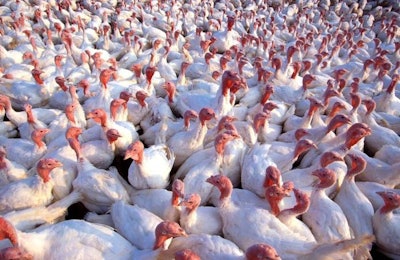
It is possible for poultry flocks to be infected with avian influenza through airborne transmission, but those odds are so slim that producers should instead focus their biosecurity efforts on preventing the spread of the virus through fomite exposure, a leading veterinarian with the U.S. Department of Agriculture (USDA) said.
During the webinar, “Combat high-pathogen avian influenza,” sponsored by Boehringer Ingelheim and presented by WATT Global Media on October 30, Dr. David Swayne, laboratory director of Southeast Poultry Research Laboratory, U.S. National Poultry Research Center, USDA, was asked if the avian influenza virus could be brought onto a farm through airborne transmission.
His simple answer was, “yes and no,” but he offered further elaboration.
“Theoretically, yes, a virus can be distributed by airborne (means). But there have been multiple studies across the world that would say for the most part, transmission of virus from farm to farm is done by moving fomites in most situations, and movement by air -- as being sucked in by the ventilation and distributed by wind -- is a much less common occurrence,” Swayne explained.
It is those fomites – such as a worker’s clothing or shoes, or equipment such as feed trucks entering the farm – to which producers should pay attention.
“If you are a farmer and you want to protect your flock, put all of your efforts into protecting your flock by reducing potential fomite exposure,” he said.
That means do not let people enter the barns in the same clothing or shoes that were worn outside, and such items to change into should be kept inside the barn, Swayne said.
All equipment that comes on, such as feed trucks could be contaminated. It is better, if possible, if the feed truck never comes on the farm, Swayne added.
Also speaking during the webinar was Dr. Stephane Lemiere, global head at Boehringer Ingelheim.
An archived version of the webinar will be available on WATTAgNet.com.


















